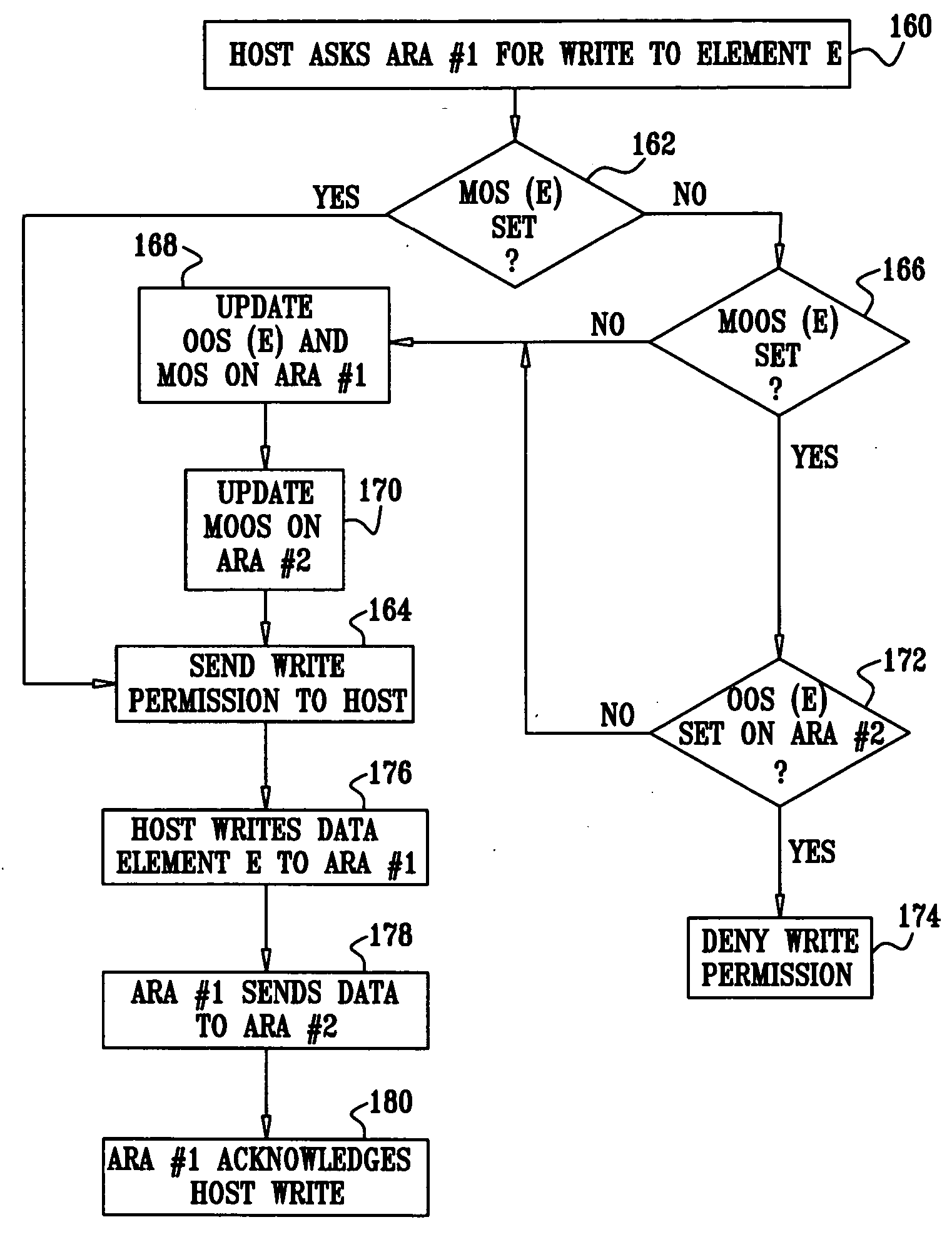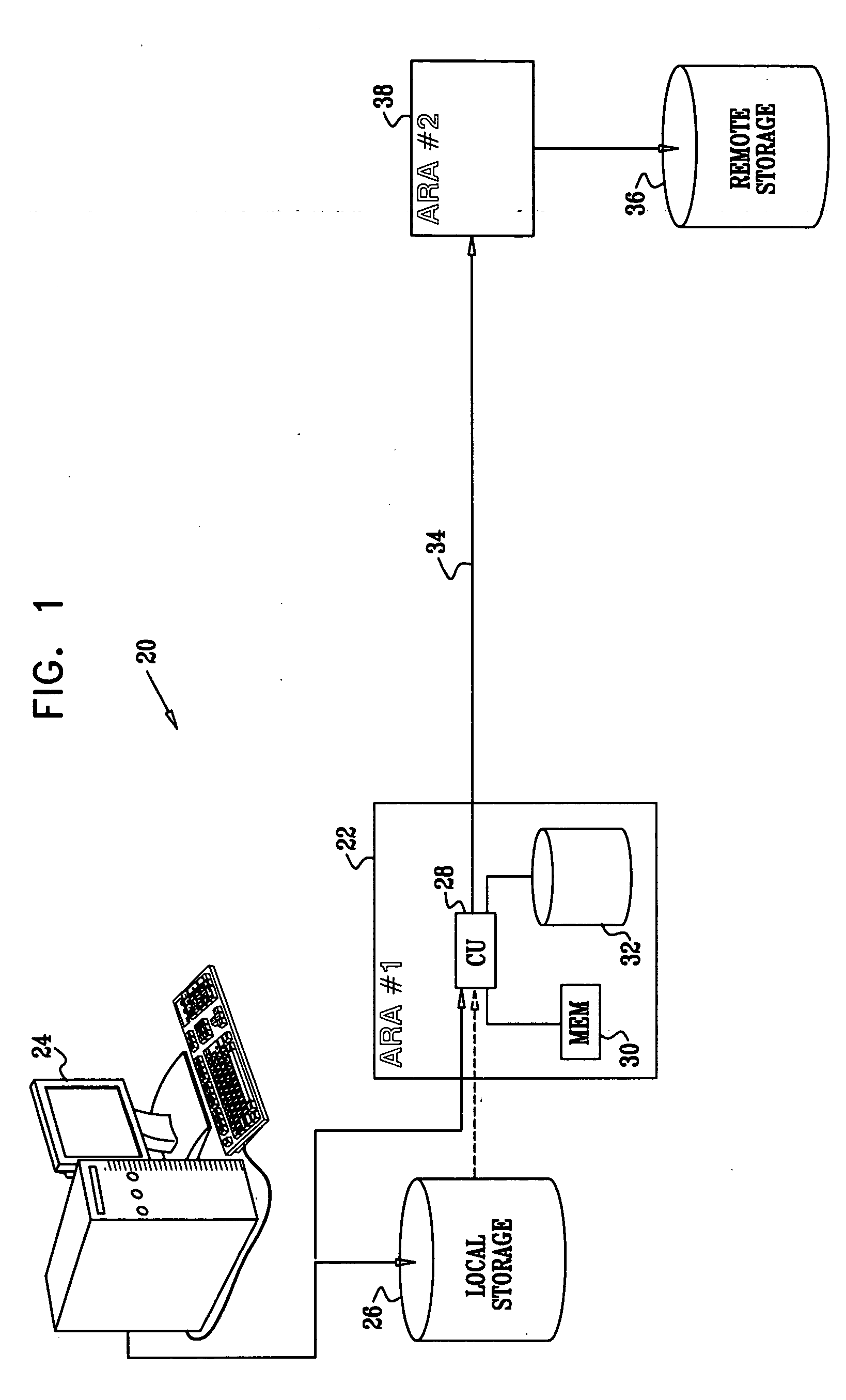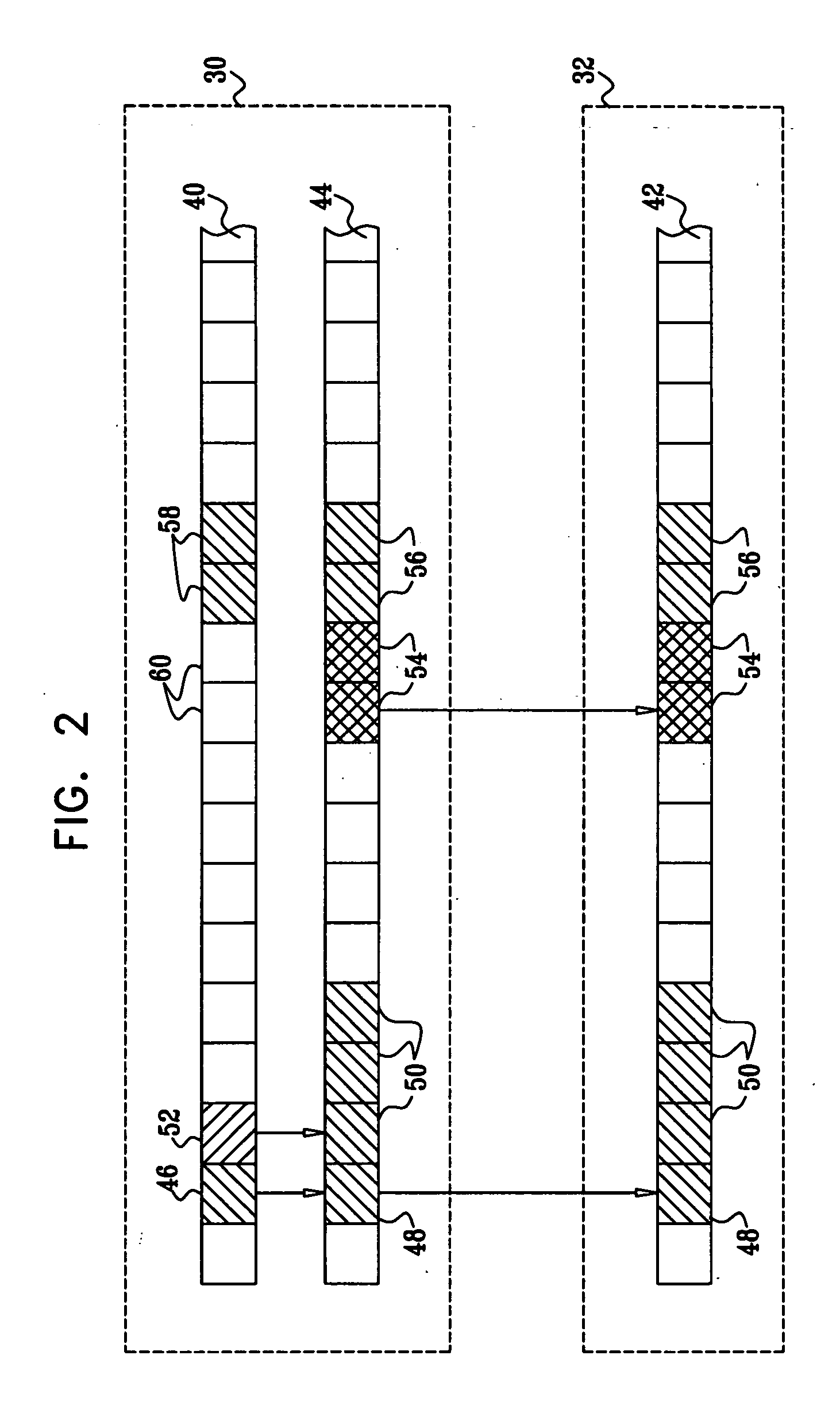Appliance for asynchronous data storage mirroring
a data storage and mirroring technology, applied in the field of data storage systems, can solve the problems of large amount of non-volatile memory that must be used for this purpose, high cost, and inability to recover quickly, so as to reduce overhead, facilitate rapid recovery, and enhance data storage security
- Summary
- Abstract
- Description
- Claims
- Application Information
AI Technical Summary
Benefits of technology
Problems solved by technology
Method used
Image
Examples
Embodiment Construction
[0058]FIG. 1 is a block diagram that schematically illustrates a data storage system 20, in accordance with an embodiment of the present invention. System 20 comprises a data storage appliance, referred to hereinafter as an asynchronous replication appliance (ARA) 22, whose function is to back up data written by a host computer 24 to a local storage medium 26. Although for the sake of simplicity, only a single host and storage medium are shown in FIG. 1, in practice ARA 22 may be configured to serve multiple hosts and / or multiple storage devices, including hosts running different operating systems and heterogeneous types of storage devices. For example, storage medium 26 may comprise a SAN disk (or disk array, such as a redundant array of independent disks—RAID), a NAS device, a storage server or substantially any other sort of network-accessible storage medium that is known in the art. In such cases, host 24, storage medium 26 and ARA 22 typically communicate with one another over ...
PUM
 Login to View More
Login to View More Abstract
Description
Claims
Application Information
 Login to View More
Login to View More - R&D
- Intellectual Property
- Life Sciences
- Materials
- Tech Scout
- Unparalleled Data Quality
- Higher Quality Content
- 60% Fewer Hallucinations
Browse by: Latest US Patents, China's latest patents, Technical Efficacy Thesaurus, Application Domain, Technology Topic, Popular Technical Reports.
© 2025 PatSnap. All rights reserved.Legal|Privacy policy|Modern Slavery Act Transparency Statement|Sitemap|About US| Contact US: help@patsnap.com



